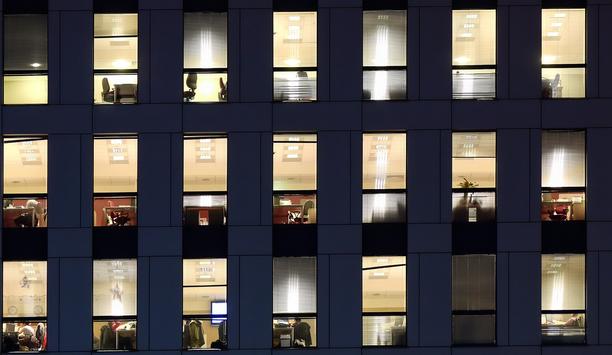FLIR Systems' Christiaan Maras highlights the benefits between cooled and uncooled thermal imaging systems.
The demand for thermal imaging to enhance the CCTV environment is increasing markedly. Thermal imaging provides 24-hour, all-year-round, long-range asset and personnel protection. Unlike other cameras thermal imaging cameras require no lighting that may draw unwanted attention to a facility or site. They provide vivid, high-contrast images of intruders even when light fog, smoke, rain, snow, foliage or lack of ambient light may make them difficult to see with the naked eye or with conventional cameras.
Some thermal imaging cameras have a range up to 35km and can be easily integrated into either legacy video or modern IP based networks to complement established daylight cameras. Compatibility with third-party video analytical tools provides reliable unattended threat detection and alarm capability.
Thermal imaging has a valuable part to play in short to long-range surveillance but there are several system choices available in the commercial market place. The main options are a cooled or uncooled thermal imaging system. So apart from the obvious what is the difference between them and which one is the most effective system?
Design specifications: cooled thermal imaging camera
Let's start with the design basics. A cryocooler is integrated with the imaging sensor on a cooled camera to reduce thermally-induced noise to a level below that of the signal being imaged. This type of camera is the most sensitive to small differences in scene temperature. They can be produced to image in the midwave infrared or MWIR band of the spectrum where the thermal contrast is high due to blackbody physics. They can also be designed to work in the longwave infrared or LWIR band.
Thermal contrast is the change in signal for a change in target temperature. The higher the thermal contrast, the easier it is to detect targets against a background that may not be much colder or hotter than the target. Generally speaking, the images from MWIR cameras pointed at nighttime scenes of interest show quite vivid contrast compared with other infrared wavebands.
Design specifications: uncooled thermal imaging cameras
 |
| Thermal imaging provides all-year-round, long range asset and personal protection |
A common detector design employed by the uncooled infrared camera is based on the microbolometer. This is a tiny vanadium oxide resistor with a large temperature coefficient on a silicon element with a large surface area exhibiting low heat capability and good thermal isolation.
Changes in scene temperature cause changes in the bolometer temperature that are converted into electrical signals and processed into an image. Uncooled sensors are designed to work in the longwave infrared from 7 to 14 microns where terrestrial temperature targets emit most of their infrared energy.
Uncooled cameras are generally less expensive than their cooled counterparts. The manufacturing economies based on detector-demand have a large part to play here but so too does the exclusion of the cyrocooler which is costly device. As they also have fewer wearing parts uncooled cameras have longer service lives.
Cost effectiveness of thermal imaging cameras
Given the price-sensitivity of the security market and the need for cameras capable of uninterrupted operation there would appear to be little or no case for a cooled camera. But of course it's not as clear-cut as that! Range and other issues have to be considered. When the stand-off range is 5km or greater, thermal imaging systems, based on cooled cameras, quickly become more cost-effective. And note the emphasis on the word ‘systems' of which the basic thermal camera is just a part.
One of the biggest cost drivers of a long-range uncooled system is the lens. As effective range requirements increase the lenses for uncooled camera systems become so bulky and expensive that it can often be cheaper to opt for a cooled camera with an equivalent focal length lens.
Thermal imaging provides 24-hour, all-year-round, long-range asset and personnel protection |
The cooled system cost is high at short focal lengths where the price of the lens is a relatively small fraction of the system cost. Unlike the uncooled system, the cost of the cooled option does not increase rapidly with focal lengths. This difference in cost is driven by the lens and the crossover point - currently around 350mm for typical systems - is changing in the rapidly emerging global IR optics market.
Why are lenses more expensive for uncooled thermal cameras at long focal length?
It has to do with another crucial lens parameter, the f/number. This determines the light gathering power of the lens and therefore affects the sensitivity of the camera system.
 |
| Some thermal imaging cameras have a range up to 35km |
As the focal length of the lens is increased, the diameter of the front lens element must also be increased to keep the system f/number constant. An uncooled camera has to be run at a low f/number - typically 1.4 ~ 2 - to achieve the sensitivity comparable with that of a cooled camera. Higher f/numbers reduce uncooled camera sensitivity and there is no adjustment to compensate for the reduction in the light signal transmitted through the lens.
The f/number of an optical system is the ratio of the focal length of the lens to the diameter of the front lens element. For example, an f/2 lens with a 500mm focal length must therefore have a 250mm diameter front lens element. That element is very expensive and approaches the limits of manufacturability for germanium. In part this is due to the difficulty in making a large enough optics-grade blank of raw germanium material.
Integration time of thermal imaging cameras
In contrast, a cooled camera system can be operated at f/numbers of 4 and higher without significantly compromising system sensitivity. This is because the exposure or integration time of a cooled camera is an adjustment parameter that can be increased to make up for reduced light throughput.
The integration times needed to operate with f/5 lenses are less than 10msec enabling 50/60Hz and higher video frame rates which are standard in the security industry. An uncooled camera cannot have its integration time increased. It is continuously integrating IR light from the scene.
An f/4 lens with a 500mm focal length need only have a 125mm diameter front optic which is much less expensive than a 250mm optic. Longer focal length lenses for cooled systems are readily available commercially - up to 1000mm - at f/4; very long focal length lenses of several metres or more at f/7.5 have also been constructed.
Effect of multi-km range on cost of thermal imaging cameras
The multi-tasking ability of the thermal camera brings it into a completely different league as its higher cost can be justified more easily |
In conclusion, long-range thermal infrared surveillance applications require long focal length lenses. The cost of lenses increases rapidly with focal length for uncooled camera systems and slowly for cooled systems. As a result, despite the higher cost of cooled camera core, the system cost - the core plus the lens - for the uncooled camera surpasses it at a focal length of around 350mm. Useful imaging of man-sized targets at multi-km ranges exceeds that limit. Therefore in these circumstances the cooled camera is the more cost-effective option.
It is of course also important that the system designer factors - in the 8,000 to 10,000-hour typical lifetime of a cryocooler into the cost model to arrive at the optimum solution. If the crycooler needs to be serviced every two years and the cost is 10% of the total system, then, in reality, the four-year cost of the cooled system is 1.2 times the initial system cost.
Thermal imaging cameras multi-tasking ability
Justifying a system is not just about purchase price and maintenance. Unlike a conventional CCTV, a thermal camera can be used in other applications beyond simply supplying a visual image for the security operation. For example, it can provide important life-saving images in the case of a fire or explosion where visibility is impeded by smoke and dust. It gives the emergency services vital information on location of victims and access routes.
By and large, security cameras have always been seen as a necessary evil and therefore the subject of strict budget limitation. The multi-tasking ability of the thermal camera brings it into a completely different league as its higher cost can be justified more easily.
A thermal camera is easily combined with other technologies such as fence alarms, ground sensors, radar, TV cameras, VMD and intelligent analysis to provide early detection, alarm, visual verification and assessment. These elements can be configured into a fully automated system to raise the alarm and notify security staff in the event of a threat, eliminating the need for constant visual monitoring of multiple cameras.
Good choice: cooled or uncooled thermal imaging camera?
 |
| Thermal imaging cameras can be easily integrated into legacy video or IP networks |
In order to achieve layered situational awareness, one of the first things that should be checked when looking for a thermal security solution is that the vendor offers a broad spectrum of products, price points, performance specifications and configuration options. Naturally they should all be fully compatible to existing command and control software environments. The ultimate choice should provide the optimum combination of equipment and software at the lowest installation cost.
The thermal cameras should be geared for facility network infrastructures and therefore be both future and backwardly compatible to support both legacy interfaces and emerging IP-based standards. Ideally, they should simply plug-and-play with all allied systems and have the software tools to provide the flexibility to accommodate future needs.
Whilst being more expensive than a traditional CCTV camera based system its price to performance ratio is considerably higher. A simple calculation proves the point. How many CCTV cameras would you need to protect and monitor a 2km-perimeter fence? Remember, if you want so guard the fence during nighttime, in all weather conditions, you will also need additional lighting for these cameras and to budget for their power consumption. And the cameras and lights will have to be maintained and serviced. Now compare that cost with just two thermal cameras to do the same job. No extras, no on-costs, just a one-off investment. Thermal imaging is a highly cost effective solution - QED.

Christiaan Maras
Marketing Manager Eurasia
FLIR Systems







